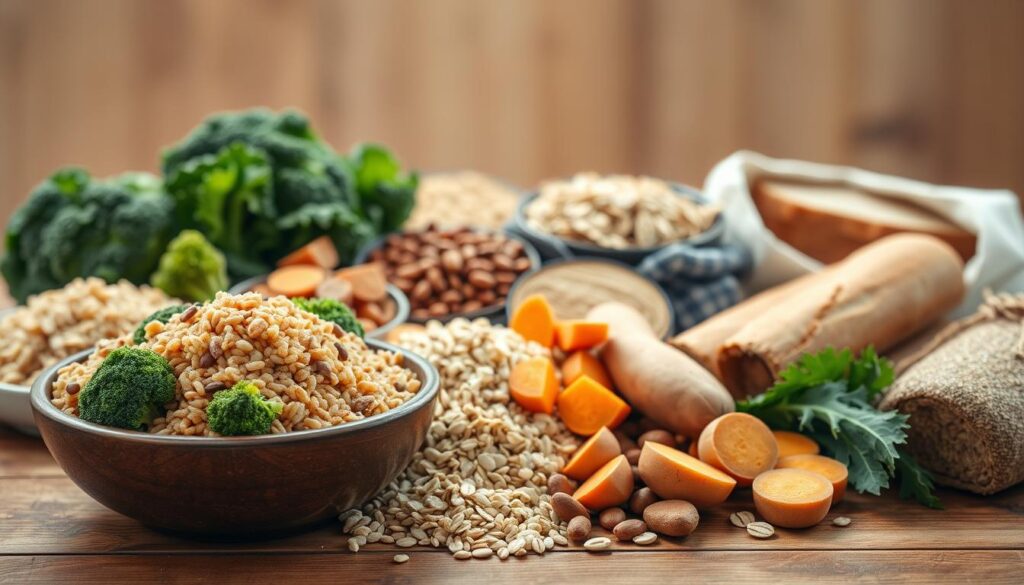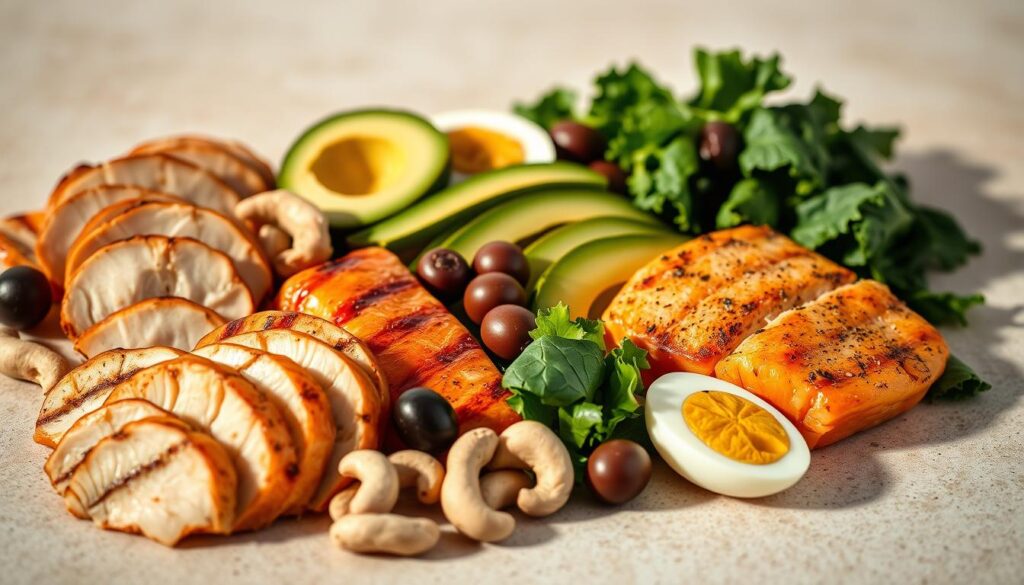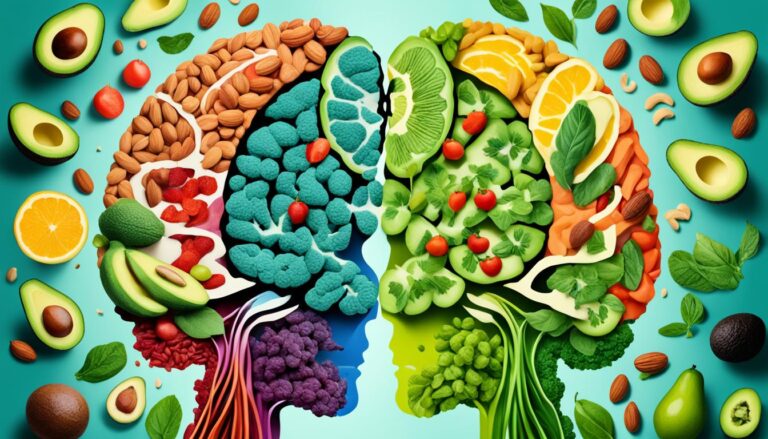Have you ever wondered how your daily food choices impact your long-term health? The answer lies in the concept of a non-fabric diet, which focuses on whole, nutrient-dense foods that fuel your body and prevent chronic diseases.
According to the World Health Organization WHO, a diverse diet rich in natural ingredients is key to maintaining wellness. The NHS also recommends consuming between 2,000 and 2,500 calories daily, depending on individual needs. But what does it take to truly embrace this approach?
In this article, we’ll explore practical strategies to help you make smarter dietary choices. From understanding portion sizes to identifying nutrient-packed options, these insights will guide you toward a healthier lifestyle.
Key Takeaways
- A non-fabric diet emphasizes whole, natural foods.
- Dietary choices play a significant role in preventing chronic diseases.
- WHO recommends a diverse diet for optimal health.
- Daily calorie intake should align with NHS guidelines.
- Practical strategies can help improve your eating habits.
Introduction to a Healthy Non-Fabric Diet
What does it mean to truly nourish your body with the right foods? A non-fabric diet focuses on avoiding processed and fake foods in favor of whole, natural ingredients. This approach ensures you get the nutrition your body needs to thrive.
According to the NHS, 77% of salt intake comes from prepackaged foods. These items often lack essential nutrients and can harm your health. By choosing fresh, unprocessed options, you can reduce your salt intake and improve your healthy eating habits.

The World Health Organization WHOrecommends mixing staple foods with legumes and vegetables. This combination provides a balanced meal that fuels your body with energy and essential nutrients. No single food contains all the nutrients you need, except breast milk.
NHS statistics reveal that many adults exceed their daily calorie needs. This overconsumption can lead to weight gain and other health issues. The Eatwell Guide suggests balancing five food groups: fruits, vegetables, proteins, carbohydrates, and dairy. This approach helps you maintain a well-rounded diet.
A diverse diet rich in natural ingredients is key to maintaining wellness.
By focusing on whole foods and avoiding processed options, you can enjoy the benefits of a non-fabric diet. This includes improved energy levels, better digestion, and long-term health. Start making smarter choices today for a healthier tomorrow.
1. Base Your Meals on High-Fiber Carbohydrates
Carbohydrates often get a bad rap, but the right ones can be a game-changer for your diet. High-fiber carbs are essential for maintaining energy and overall wellness. They not only keep you full longer but also support digestion and regulate blood sugar levels.
Why Fiber is Crucial
Fiber plays a key role in preventing type 2 diabetes by slowing down sugar absorption. It also helps manage weight by making you help feel fuller for longer. According to the NHS, starchy carbs should make up one-third of your meals for optimal health.

Best Sources of High-Fiber Carbs
Not all carbs are created equal. Whole grains, for example, contain 50% more fiber than refined versions. Here are some top sources:
- Brown rice 3.5g per cup
- Wholewheat pasta 6g per cup
- Oats 4g per 40g serving
When preparing these foods, keep potato skins on and use minimal oil. This preserves their nutritional value and keeps your meals healthy.
Contrary to popular belief, carbs aren’t inherently fattening. NHS data shows that carbs contain 4 calories per gram, compared to 9 calories per gram in fats. Incorporating high-fiber carbs into your diet can actually support weight management.
Try meal plans like quinoa bowls, barley soups, or buckwheat pancakes. These options are not only delicious but also packed with the nutrients your body needs to thrive.
2. Incorporate a Variety of Fruits and Vegetables
Adding more color to your plate can transform your health in surprising ways. Fruits and vegetables are packed with essential nutrients that support overall wellness. The World Health Organization WHOrecommends at least five portions daily, while the NHS defines one portion as 80g of fresh or 30g of dried produce.

The Benefits of a Colorful Plate
Phytonutrients in produce, like lycopene in tomatoes, have been shown to reduce the risk of prostate cancer. A Harvard study found that consuming five daily servings lowers heart disease risk by 20%. These natural compounds also support immune function and reduce inflammation.
Practical Tips for Daily Intake
Here are some simple ways to include more fruit and vegetables in your diet:
- Roast root vegetables like carrots and sweet potatoes for a flavorful side dish.
- Spiralize zucchini or carrots to create low-carb noodles.
- Use flash-freezing techniques to preserve nutrients in seasonal produce.
Portion examples include one medium apple, seven strawberries, or two broccoli spears. Be cautious with juice—limit intake to 150ml daily due to free sugar content. A colorful plate not only looks appealing but also ensures you’re getting a wide range of nutrients.
Eating a diverse range of produce is one of the simplest ways to improve your health.
By incorporating a variety of fruit and vegetables, you can enjoy better digestion, improved energy, and long-term health benefits. Make it a habit to add a rainbow of produce to every meal.
3. Choose Lean Proteins and Healthy Fats
Fueling your body with the right proteins and fats can make a significant difference in your health. These nutrients are essential for energy, muscle repair, and overall wellness. The key is to select high-quality sources that support your body without compromising your health.

Optimal Protein Sources
Protein is a building block for your body, and choosing the right sources matters. Lean options like chicken breast provide 31g of protein per 100g, while sirloin steak offers 27g. For a sustainable choice, consider MSC-certified salmon, sardines, or Arctic char. These fish are rich in omega-3s, which the NHS links to reduced heart disease risk.
Portion control is also important. A hand-sized serving of protein is a good guideline for most meals. This ensures you get enough without overeating.
Understanding Healthy Fats
Not all fats are created equal. Monounsaturated and polyunsaturated fats MUFAs and PUFAsare beneficial for your health. For example, olive oil improves HDL cholesterol, which supports heart health. The WHO recommends replacing butter with rapeseed oil for a healthier alternative.
Here are some simple swaps to incorporate healthier fats into your diet:
- Use avocado instead of mayo on sandwiches.
- Opt for nuts or seeds as snacks instead of chips.
- Cook with olive oil instead of margarine.
Be cautious of trans fats, which are banned in 58 countries, including the USA. These fats can increase the risk of heart disease and other health issues.
Choosing quality proteins and fats is a cornerstone of a nutritious eating plan.
By focusing on lean proteins and healthy fats, you can fuel your body effectively while reducing health risks. Make these choices a regular part of your meals for long-term benefits.
4. Limit Sugar and Salt Intake
Many people overlook the impact of sugar and salt on their daily health. These common ingredients are often hidden in foods, posing significant risks if consumed in excess. Understanding their effects can help you make smarter dietary choices.
The Hidden Dangers of Sugar
Excessive sugar intake is linked to serious health issues. For example, insulin resistance can develop, increasing the risk of type 2 diabetes. Many processed foods contain hidden sugars, such as pasta sauce 12g per servingand yogurt 19g per 150g.
The NHS defines foods with over 22.5g of sugar per 100g as high in sugar. Regularly consuming these items can lead to weight gain and other complications. Reading labels is essential to identify hidden sugars like dextrose.
Reducing Salt for Better Health
High salt intake is another common issue. The WHO recommends no more than 5g daily, yet the average intake is double this amount. Excess salt can raise blood pressure, increasing the risk of hypertension. In the U.S., 47% of adults have high blood pressure.
Here are some effective ways to reduce salt in your diet:
- Use citrus zest or nutritional yeast for flavor instead of salt.
- Choose low-sodium alternatives like coconut aminos, which contain 90% less sodium than soy sauce.
- Be cautious of ingredients like sodium nitrate,which indicate high salt content.
| Food Item | Sugar Content | Salt Content |
|---|---|---|
| Pasta Sauce | 12g/serving | 1.2g/serving |
| Yogurt | 19g/150g | 0.1g/150g |
| Coconut Aminos | 0g | 0.1g/tbsp |
Reducing sugar and salt intake is one of the simplest ways to improve your health and reduce risks.
By being mindful of sugar and salt in your diet, you can lower your risk of chronic conditions and enjoy better overall health. Start by reading labels and making small, impactful changes today.
5. Stay Hydrated and Active
Staying hydrated and active is a cornerstone of maintaining energy and overall wellness. Proper hydration supports bodily functions, while physical activity keeps your body strong and healthy. Together, they form a powerful duo for long-term health.
The Importance of Hydration
Drinking enough water is vital for maintaining energy and supporting bodily functions. The NHS recommends 6-8 glasses of fluids daily. During exercise, add 500ml of water per hour to stay hydrated.
Not all beverages are equal. Herbal teas are a great alternative to sugary sports drinks, which can contain up to 50g of sugar per bottle. Infusing water with cucumber or mint adds flavor without extra calories.
Incorporating Physical Activity
Regular exercise helps manage weight and improves overall health. The WHO suggests 150 minutes of moderate activity weekly, while the CDC recommends at least 75 minutes of vigorous activity.
Non-exercise activity thermogenesis NEATis a simple way to stay active. Small changes, like wall pushups during coffee breaks, can make a big difference. Here are some activity stacks to try:
- Take a 5-minute walk after every meal.
- Use stairs instead of elevators.
- Stretch during TV commercials.
| Activity | Calories Burned 30 mins |
|---|---|
| Walking | 120 |
| Cycling | 240 |
| Yoga | 150 |
Small, consistent efforts in hydration and activity can lead to significant health improvements.
By prioritizing water intake and finding time for movement, you can enhance your energy and overall well-being. Start with simple changes and build habits that last.
Conclusion: Embracing a Healthy Non-Fabric Diet
Adopting a balanced eating plan can transform your lifestyle and improve your well-being. The benefits of this approach are clear: consuming 25g of fiber daily, limiting saturated fats to under 30g, and enjoying five portions of vegetables can significantly enhance your health.
Building new habits takes time. Research shows that a 21-day cycle is effective for forming lasting changes. Start with a 6-week gradual implementation plan to make the transition smoother. Tools like MyFitnessPal and the Eatwell Guide PDF can provide valuable support along the way.
According to the WHO, this type of diet can prevent 80% of premature heart disease cases. Additionally, adhering to these guidelines can lower your risk of diabetes by 40%. Small, consistent steps can lead to significant improvements in your overall health.
Take the first step today. Embrace a balanced diet and enjoy the long-term rewards of a healthier, more vibrant life.





